Passenger Vessel Sector Faces Winding Path Back to ‘Normal’
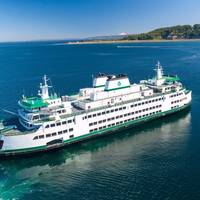
The year just ended, 2021, might be described as being about “trying to get back to normal”, across the entire transportation spectrum, two years into the pandemic. During this time, the decarbonization and electrification waves have swept across maritime passenger transport. The passenger side of the business is dependent on multiple funding sources; increasingly, this money will be driven by environmental and social considerations.The long-awaited funding of “infrastructure”-related projects…
MARAD Awards $12.6 Million in Grants for US Marine Highways
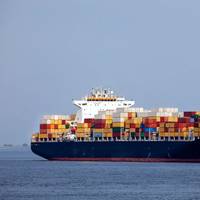
The U.S. Department of Transportation’s Maritime Administration (MARAD) awarded $12.6 million in grants to nine marine highway projects across the Nation under the America’s Marine Highway Program (AMHP). The funding will help address supply chain disruptions, enhance the movement of goods along our navigable waterways, and expand existing waterborne freight services in Delaware, Hawaii, Indiana, Kentucky, Louisiana, North Carolina, New York, New Jersey, Tennessee, Texas, and Virginia.“These investments through the America’s Marine Highway Program will help us move more goods…
It’s Time to Upgrade to a Marine Evacuation System
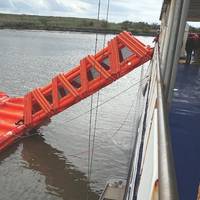
As domestic traffic from coast-to-coast continues to worsen, ferry operators are seeing a steady growth in passenger demand. As passenger demand grows, so does the demand for efficiency and hybrid technology to be incorporated into fleets. But what innovations support a fleet’s number one priority – safety? Will efficiency and the latest green technologies support these critically important vessels in an emergency situation? Is the crew aware of how much time they have to evacuate all passengers?Traditional ferry evacuation systems require passengers to be loaded onto lifeboats on deck…
North American Ferries: Faster, Greener & Safer
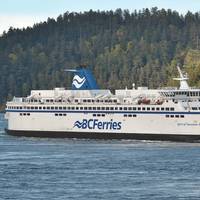
Domestic ferries adjust their business models to met regulatory pressures and exceed environmental standards with an eye towards improved service. And, not a minute too soon. In North America, stalwarts in the ferry business continue to shorten journey times compared to surface alternatives, while at the same time, bring accessibility to barrier and coastal islands that would otherwise be impossible to reach. Established stakeholders continually fine-tune their operations in a…
Cape May-Lewes Ferry Celebrates 50th
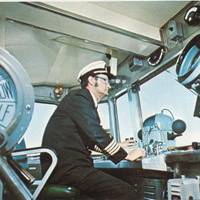
In 1964, Lyndon B. Johnson was President; the Beatles first appeared on the Billboard Chart with I Want to Hold Your Hand; the World's Fair opened in New York and the Cape May-Lewes Ferry made its grand debut. On July 1, 1964, the very first ferry vessel departed the Lewes, Delaware terminal at 6:47 a.m. The ferry carried eight vehicles and 15 passengers. Since then, more than 43 million passengers and over 14 million vehicles have made the scenic, 17- mile, 85-minute trip across Delaware Bay to and from Victorian Cape May, NJ and historic Lewes, Delaware.
Ecospeed Applied on Several Fast-going Ferries, Enabling Optimum Hull Performance During Entire Service Life
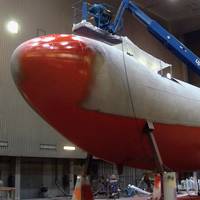
Over the last couple of months several owners of fixed route passenger vessels have chosen Ecospeed as the preferred coating to protect their vessel’s underwater hull for its entire sailing life. Among the vessels coated with Ecospeed are the largest Ro-Pax ferry in the world, a newbuild ferry in Croatia, and one of the vessels that provides ferry services across the Delaware Bay on the East Coast of the United States. These vessels will all benefit greatly from the fuel optimizing possibilities Ecospeed offers…
Real-World Test Of Backscatter Tech
The Transportation Security Administration (TSA), in consultation with the U.S. Coast Guard, will begin testing advanced explosives detection technology today as part of the Secure Automobile Inspection Lanes (SAIL) test project. The program will conduct explosives screening on automobiles boarding the Cape May-Lewes Ferry in Cape May, N.J. The 30-day test uses a mobile screening van, fitted with an advanced non-invasive screening technology called Z Backscatter. Passengers will briefly exit their vehicle and then the screening van will slowly drive next to the car or truck and screen for explosives. The entire process takes less than a minute, and travelers will not be delayed or miss their ferry due to the program.
Hornblower Conducts Marine Master Planning for Ferry
Hornblower Marine Services (HMS) has secured a Marine Master Planning Contract with Delaware River and Bay Authority (DRBA) for its Cape May-Lewes Ferry operation. Cape May-Lewes Ferry, in service since 1964, operates five 1,000 passenger/100 car ferries on a 17-mile route between Cape May, New Jersey and Lewes, Delaware. The year round operation carries some 1 million passengers and 350 thousand cars per year. HMS under the DRBA contract will provide the organization with marine master planning services resulting in a phased and comprehensive strategy to maintain, improve, and optimize operations and assets associated with their Cape May-Lewes Ferry operation.







